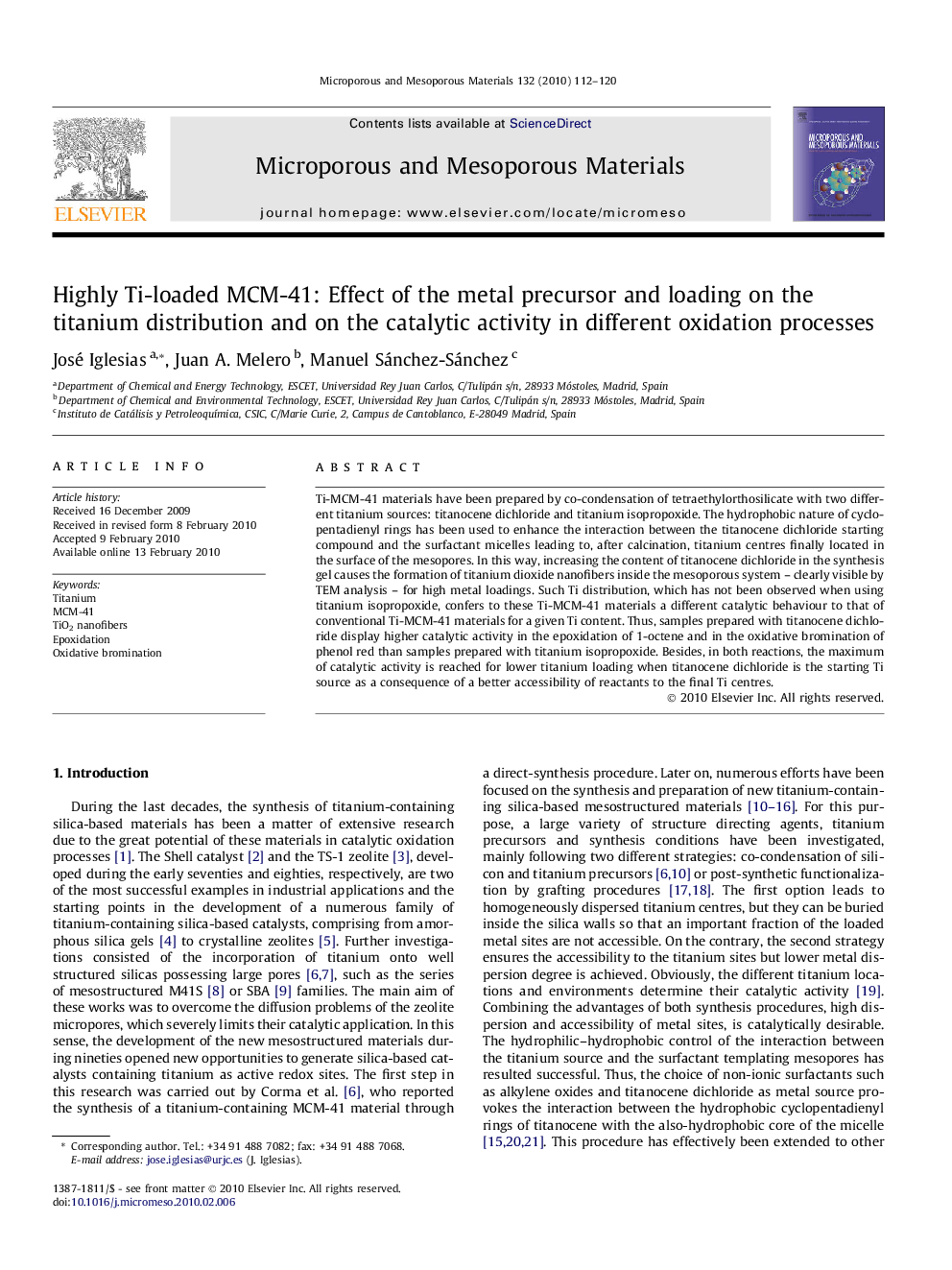| Article ID | Journal | Published Year | Pages | File Type |
|---|---|---|---|---|
| 75150 | Microporous and Mesoporous Materials | 2010 | 9 Pages |
Ti-MCM-41 materials have been prepared by co-condensation of tetraethylorthosilicate with two different titanium sources: titanocene dichloride and titanium isopropoxide. The hydrophobic nature of cyclopentadienyl rings has been used to enhance the interaction between the titanocene dichloride starting compound and the surfactant micelles leading to, after calcination, titanium centres finally located in the surface of the mesopores. In this way, increasing the content of titanocene dichloride in the synthesis gel causes the formation of titanium dioxide nanofibers inside the mesoporous system – clearly visible by TEM analysis – for high metal loadings. Such Ti distribution, which has not been observed when using titanium isopropoxide, confers to these Ti-MCM-41 materials a different catalytic behaviour to that of conventional Ti-MCM-41 materials for a given Ti content. Thus, samples prepared with titanocene dichloride display higher catalytic activity in the epoxidation of 1-octene and in the oxidative bromination of phenol red than samples prepared with titanium isopropoxide. Besides, in both reactions, the maximum of catalytic activity is reached for lower titanium loading when titanocene dichloride is the starting Ti source as a consequence of a better accessibility of reactants to the final Ti centres.
